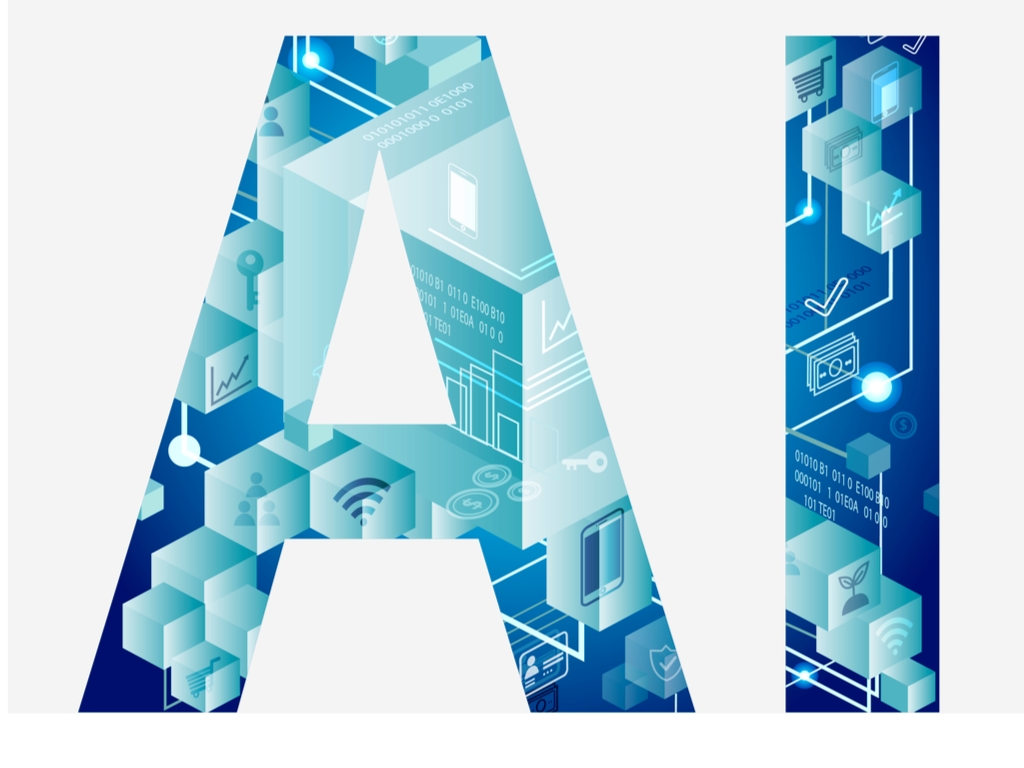 Grounded during this pandemic, and unable to interact with clients in person, I try to write 3,000 words a day. Morning after morning, fueled by good black coffee, I type away. I share insights, based on research, for the supply chain leader. I write for this blog, craft reports from research for our newsletters, create blogs for Linkedin, and build articles for Forbes. I am also developing a framework for my new book. Stay tuned.
Grounded during this pandemic, and unable to interact with clients in person, I try to write 3,000 words a day. Morning after morning, fueled by good black coffee, I type away. I share insights, based on research, for the supply chain leader. I write for this blog, craft reports from research for our newsletters, create blogs for Linkedin, and build articles for Forbes. I am also developing a framework for my new book. Stay tuned.
Frequently, when I post about an issue, a well-intending consultant or an aggressive business development executive will tout the evolution of the autonomous supply chain as the answer. The comment is usually something like, “Implement RPA or AI to solve this problem.” Or, “If you need an answer, implement my solution.” When this happens, I sigh. This type of response is just not helpful. Everyone tries to be a cool kid with over-zealous comments on posts, but unfortunately, there is no truth in advertising in the supply chain market. (If the industry were grounded in truth in advertising repercussions, there would be far fewer signs in the airports from consultants and technology providers.)
Background
The autonomous supply chain is a vision, but it is not today’s reality. I find in my Supply Chains to Admire research that 96% of companies (when compared to their peer groups) are unable to drive improvement while delivering higher performance year-over-year on a balanced scorecard of growth, inventory turns, operating margin and Return on Invested Capital (ROIC). I define supply chain excellence as year-over-year performance better than the peer group on this balanced scorecard. Ecolab, L’Oreal, and TJX are exceptions. They did it. Each company ranks in the 4% of companies beating their peer groups.
Figure 1. Orbit Chart of TJX Versus Peer Group for the Period of 2010-2019

Figure 2. Orbit Chart for Ecolab at the Intersection of Inventory Turns and Operating Margin Versus the Chemical Industry for the Period of 2010-2019

The term “AI” is overused. The marketing is used freely without meaning. Technology vendors are hanging the word “AI” on their marketing like I hang icicles on my XMAS tree. When I get the press releases and briefings, I laugh. If only the aspirations were equal to the delivery. The reason? We don’t know enough about what drives performance improvement to code an AI engine even if it was ready.
Shifts in Technology
Data science and cloud-based delivery offer promise, but supply chain planning is morphing slowly. …and at the edges. No technology company is attacking supply chain planning at the center.
Let’s celebrate that over the last two years, there were four significant acquisitions by traditional supply chain planning providers to deepen analytics capabilities:
- 07/2018 JDA purchases Blue Yonder (Purchase price confidential.)
- 11/2017 Logility acquires Halo for 9.3 M$
- 10/2019 Llamasoft merges with Opex (Amount not disclosed.)
- 06/2020 Kinaxis buys Rubikloud for 60M$

 The supply chain planning vendor faces the innovators’ dilemma. Maximizing the market potential requires a step-change in design. Automating the current platform of a conventionally-held definition of planning is insufficient because the design of the planning platform– in the face of the pandemic –is quickly becoming outdated. The problem? Future growth is dependent on selling the current solution, but the existing convention/platform, as shown in Figure 3, is not the right model for today’s supply chain.
The supply chain planning vendor faces the innovators’ dilemma. Maximizing the market potential requires a step-change in design. Automating the current platform of a conventionally-held definition of planning is insufficient because the design of the planning platform– in the face of the pandemic –is quickly becoming outdated. The problem? Future growth is dependent on selling the current solution, but the existing convention/platform, as shown in Figure 3, is not the right model for today’s supply chain.
Figure 3. Current Supply Chain Planning Flows

The technology companies face tough challenges breaking out of the pack. We don’t know the potential of new math to redefine supply chain planning. Today’s problem in the pandemic is wildly different than the pre-pandemic world. If anyone thinks that they know the answer, show them the door. It is not that easy, and hanging “AI” all over the marketing literature is just not helpful.
In short, we do not know the potential of the art of the possible. Data scientists and supply chain leaders speak different languages with vast differences in world views. The data scientist is over-zealous, and the Supply Chain Leader is wary. Bringing the two together requires leadership. My goal in this blog is to seed the discussions to drive better outcomes.
Examining The Current State
The analyst mindset is to track software evolution by taxonomy where like solutions are grouped, named and tracked. Supply chain planning is a subset of the decision support technology taxonomy. Other forms of decision support include revenue management, trade promotion management, cost-to-serve, and network design. Now in its fifth decade of evolution, supply chain planning is starting to change. The shifts are happening slowly at the edges. I am celebrating, but my hope is to drive seismic changes from the center. What we have now is not good enough, and I have my fingers crossed that COVID-19 will drive a significant and positive shift by highlighting the deficiencies.
Several false assumptions underly current supply chain planning solutions:
-Companies could systemically apply optimization to decisions to drive improved outcomes.
The issue? Most of the optimization focus in the traditional software solution focuses within a function of source, make or deliver. Procurement and transportation operated as islands.
As the supply chains became more sophisticated with global operations, a need grew for more complex requirements. The regional supply chain in the 1990s was more straightforward; and in those days, localized optimization was more effective. This is no longer true.
-The order is a good proxy for demand. Historic order patterns are useful in predicting future demand.
The issue? COVID-19 is highlighting this issue. As we work through the COVID-19 period, supply chain leaders face a period of ongoing disruption until vaccination is widely available. How long will this be? We don’t know. Companies have never faced wave-after-wave disruption. I expect supply chain leaders to fight wave-after-wave of disruption for two-to-three years.
-Manufacturers operate in a constrained environment, and the goal is the automation of the Theory of Constraints theory.
The issue? Over 40% of the manufacturing is outsourced, and we have not automated networks. Theory of Constraints is only one tool in our tool belt. We need to combine TOC with flow analysis to drive better answers.
-Volume planning is sufficient.
The issue? Today, there is no easy way to make price/volume trade-offs. Decisions based on volume create blind spots for cost management, especially in the face of changing mix.
-The efficient supply chain is the most effective.
The issue? The lowest input costs define the efficient supply chain design, but the construct ignores the factors of variability. Demand is not demand, and an item is not an item—details matter. For example, the higher the demand variability, the more the company needs greater capacity in manufacturing assets and inventory buffers. An agile supply chain is a different design focused on minimizing the impact of variability while a responsive supply chain focuses on the shortest cycles. Most companies don’t have one supply chain: they have many. Most have a need for all three designs.
-Functional optimization drives effective supply chains.
The issue? Managing total costs is tough: companies cannot quickly assess total cost data. Over 90% of companies have implemented ERP, yet only 29% of companies easily access total cost information. Since the supply chain is a complex non-linear system, functional optimization often throws the supply chain out of balance. For example, the lowest transportation costs can have adverse effects on other distribution costs and inventory levels.
-Tight integration with ERP improves decision making.
The issue? Transactional data is important, but not sufficient. Only 40-60% of the required data comes from ERP, and with COVID-19, market data is essential. The most effective supply chain planning systems focus on bi-directional orchestration and what-if analysis.
Moving Forward
Technology companies are feature-oriented. The focus is on building more in-depth features versus questioning overarching architecture. The issue? Many of the features aren’t used increasing complexity.
The evolution of decision support is happening on the edges. The solutions are moving from a functional platform focused on the Theory of Constraints (TOC) to produce a feasible plan to a new wor
Unfortunately, as shown in Figure 2, we were not able to even accomplish this goal. As shown in Figure 2, companies are not satisfied with their capabilities to build a feasible supply plan.
Figure 2. Current Gaps in Supply Chain Planning
 Planners have access to more data than the larger organization. Only 1/3 of companies have access to what-if analysis, only 18% of supply chain leaders feel that they can get to planning data when they need it, and only 29% of organizations can easily get to total cost information. My conclusion? It is time for a disruption in the supply chain planning market. Bring on new forms of analytics in a meaningful way…
Planners have access to more data than the larger organization. Only 1/3 of companies have access to what-if analysis, only 18% of supply chain leaders feel that they can get to planning data when they need it, and only 29% of organizations can easily get to total cost information. My conclusion? It is time for a disruption in the supply chain planning market. Bring on new forms of analytics in a meaningful way…
My Plea
My plea is for us to blow-up the market and drive meaningful change from the center of the platform. It is a time for advanced analytics, flow, policy, and automated rule sets to drive better answers. The need is there. The technology is moving us along, but the problem is us. We need to adjust our mental models to test and learn to understand the Art of the Possible and stop pushing hollow marketing. Please don’t automate the current state: let’s make it better.
I would love to hear from you. I look forward to hearing your thoughts.
If you are enjoyed this post, you might find value from these as well:
A Framework for Supply Chain Leaders to Understand New Forms of Analytics
Cognitive Computing Getting Clear on the Definitions
Not the Jetsons: Ten Use Cases for Cognitive Analytics







